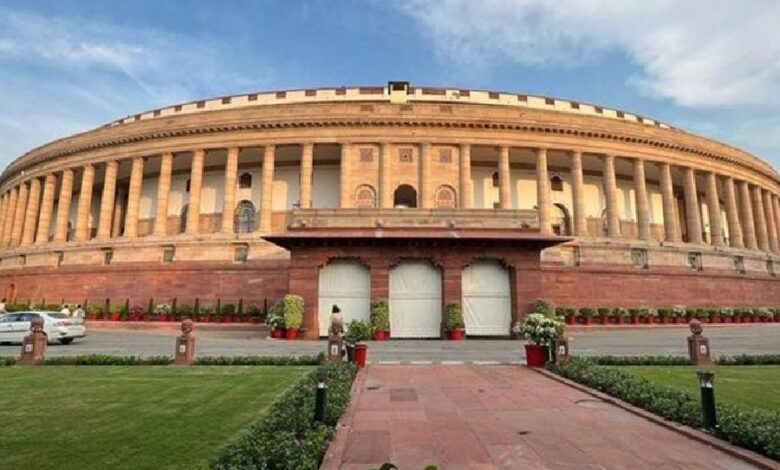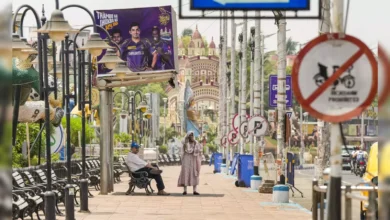India’s old Parliament house: The history behind it
The historic building is said to as a 'architectural jewel' of Delhi and a 'repository of India's history' and its 'democratic ethos' by historians and conservation architects.

The administration declared that House activities will relocate to the new Parliament building as of Monday, when the special session of the Parliament will start. On May 28, the new complex was unveiled by Prime Minister Narendra Modi, who expressed the hope that it will serve as a cradle of empowerment, kindling and nurturing aspirations into reality.
The administration announced on Wednesday that the first day of the five-day session beginning on September 18 would feature a special discussion on the 75-year history of the Parliament, beginning with the Samvidhan Sabha.
The Parliament’s activity will be conducted in the new complex nearby during the session instead of the old structure.
The multi-chequered heritage of the former Parliament
The monument, which Lord Irwin, the viceroy at the time, ceremoniously opened on January 18, 1927, has seen colonial rule, the Second World War, the start of independence, the adoption of the Constitution, and the enactment of numerous laws—some historic and many contentious—during its history.
The historic building is said to as a “architectural jewel” of Delhi and a “repository of India’s history” and its “democratic ethos” by historians and conservation architects.
The historic structure, which features a circular form and a first-floor colonnade made of 144 pieces of white sandstone, was inaugurated when the British Raj’s new imperial capital, New Delhi, was being constructed on a site in the Raisina Hill region.
An elaborate ceremony was staged to celebrate the building’s opening; at the time, it was known as the Council House, according to historical records and unique old photographs.
The structure, which has a 560-foot diameter and a 300-foot circumference, was created by Sir Herbert Baker, who was also selected to design Delhi’s new imperial capital along with Sir Edwin Lutyens.
Lord Irwin arrived in his viceregal carriage at a pavilion that had been set up at the Great Place (currently Vijay Chowk), according to the book “New Delhi: Making of a Capital” by Malvika Singh and Rudrangshu Mukherjee. He then “proceeded to open the door of the Council House with a golden key, handed to him by Sir Herbert Baker.” There was a lot of coverage of the opening of the Parliament House building back then in both the domestic and international press. It is now regarded as India’s temple of democracy.
The Monsoon session, which ended on August 11, was the final legislative session to take place in the building before the end of August. Over the course of the 23 days, there were 17 sittings.
If the proceedings are moved to the new complex for the five-day session, the multi-chequered heritage of the former Parliament building will be preserved in time.
According to renowned conservation architect and urban planner AGK Menon, “The Parliament House is not just an iconic building; it is a repository of history and a repository of our democracy.”
He claimed that the government’s decision to construct the new facility as part of the Central Vista redevelopment project was motivated by the need for more room in the future.
“But, the question is, was it really needed? Could we not have discussed and found ways to improve amenities in the old Parliament (building) and continued in it the tradition of democracy, which the building symbolises? Wide consultations should have been held before going ahead with such a project,” he suggested.
The first prime minister Jawaharlal Nehru’s “Tryst with Destiny” address was heard echoing throughout this historic structure, where the Constituent Assembly met, deliberated, and enacted the Constitution, Menon said.
The Constituent Assembly met for the first time in the Central Hall on December 9, 1946, and on November 26, 1949, it adopted the Constitution.
The newly constructed, four-story, triangular parliament
- The new four-story, triangular structure has a built-up area of 64,500 square metres.
- It will have architectural designs from many regions of India and is intended to be earthquake resistant.
- It will have a lifespan of more than 150 years and use 30% less energy.
- The new Parliament House will have a cumulative seating capacity of more than 150%.
- As a result, 888 seats would be available in the Lok Sabha (House of the People).
- The Rajya Sabha (Council of States) will consist of 384 seats.
- The offices of the Parliament will also have a number of facilities and digital interfaces.
- Each desk will have an electronic device, and both homes will have excellent audio and video.
- There will be a library, a canteen, and a “Constitution Hall” to showcase India’s illustrious past.
- Additionally, it will contain a regal Constitution Hall to highlight India’s democratic legacy, an MPs’ lounge, a library, many committee rooms, dining places, and plenty of parking.
Several MPs from various parties discussed their opinions of the new complex and the old building.
“The old Parliament (building) holds a lot of historical significance, that is where the nation gained freedom, that is where Nehru’s famous speech took place … There are a lot of memories associated with it, Rajeev Shukla of the Congress told PTI Video.
RK Singh, a member of the BJP, said of the brand-new edifice, “There can’t be a more beautiful Parliament (building).”
Derek O’Brien of the TMC said, “As a parliamentarian, I have found no better place in the Parliament than the Central Hall. For fellowship, for friendship, for sharing thoughts, for bonding.” KC Tyagi of the JD(U) said, “I prefer the older Parliament (building) more. I have been a part of it. I just came back from London and their parliament building is 200 years older than ours. So, old is gold.”
Due to the existing sitting arrangement, it is not viable to expand the seating capacity because future delimitations brought on by India’s growing population may result in more MPs. Additionally, upgrading the infrastructure and technologies used is not possible.
The new Parliament House is now necessary as a result of this.
Please, also have a look into: Parliament gears up for historic 75-year milestone session



